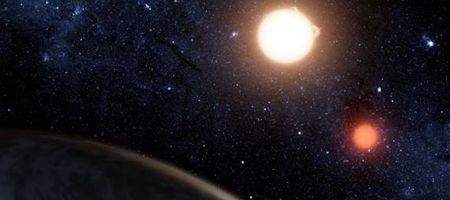Planets with binary stars – such as Star Wars’ Tatooine – may be dangerous places to live, even risking the chance of being ejected into interstellar space.

The orbits of very distant binary stars often become very eccentric, passing very close to the planets. This can then wreak havoc on planetary systems, triggering planetary scatterings and even ejections.
“The stellar orbits of wide binaries are very sensitive to disturbances from other passing stars as well as the tidal field of the Milky Way,” says Nathan Kaib of Northwestern University.
“This causes their stellar orbits to constantly change their eccentricity – their degree of circularity. If a wide binary lasts long enough, it will eventually find itself with a very high orbital eccentricity at some point in its life.”
When a wide binary orbit becomes very eccentric, the two stars will pass very close together once per orbit on one side of the orbital ellipse, while being very far apart on the other.
Kaib’s team added a a hypothetical wide binary companion to Earth’s solar system which eventually triggered at least one of four giant planets (Jupiter, Saturn, Uranus and Neptune) to be ejected in almost half of the simulations.
“This process takes hundreds of millions of years if not billions of years to occur in these binaries. Consequently, planets in these systems initially form and evolve as if they orbited an isolated star,” he says.
“It is only much later that they begin to feel the effects of their companion star, which often times leads to disruption of the planetary system.”
And there’s plenty of evidence that this process occurs regularly in known extrasolar planetary systems. Planets that are known to reside in wide binaries are shown to be statistically more eccentric than planets around isolated stars like our sun.
“The eccentric planetary orbits seen in these systems are essentially scars from past disruptions caused by the companion star,” says Sean Raymond of the University of Bordeaux.
This only seems to happen whe the planetary system extends from its host star as much as 10 times the distance between Earth and the sun. Otherwise, the planetary system is too compact to be affected by even a stellar companion on a very eccentric orbit.
“Recently, planets orbiting at wide distances around their host stars have been directly imaged. Our work predicts that such planets are common but have so far gone largely undetected,” says Queen’s University physics professor Martin Duncan.






